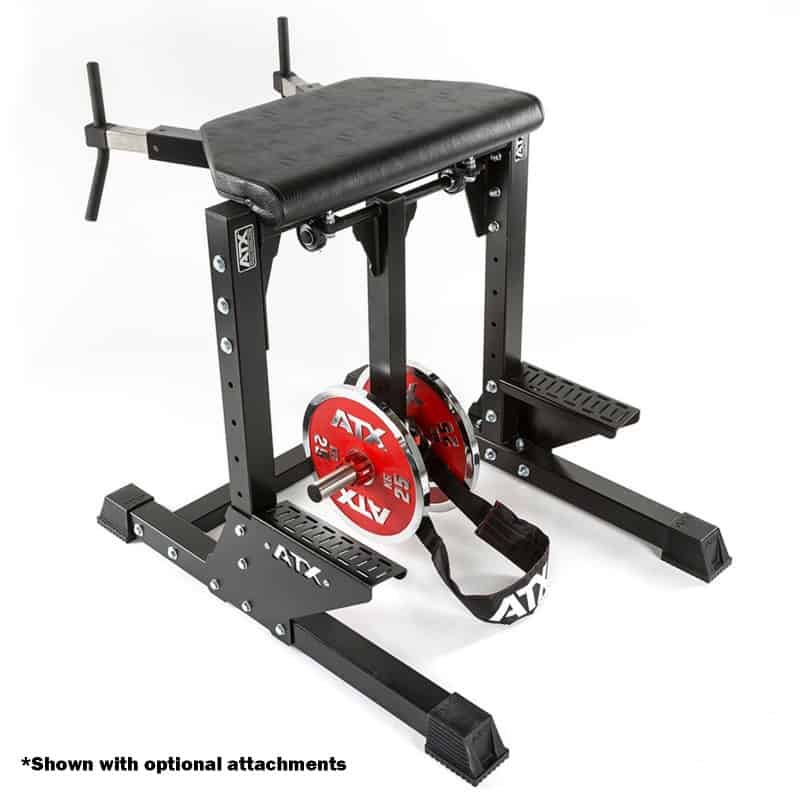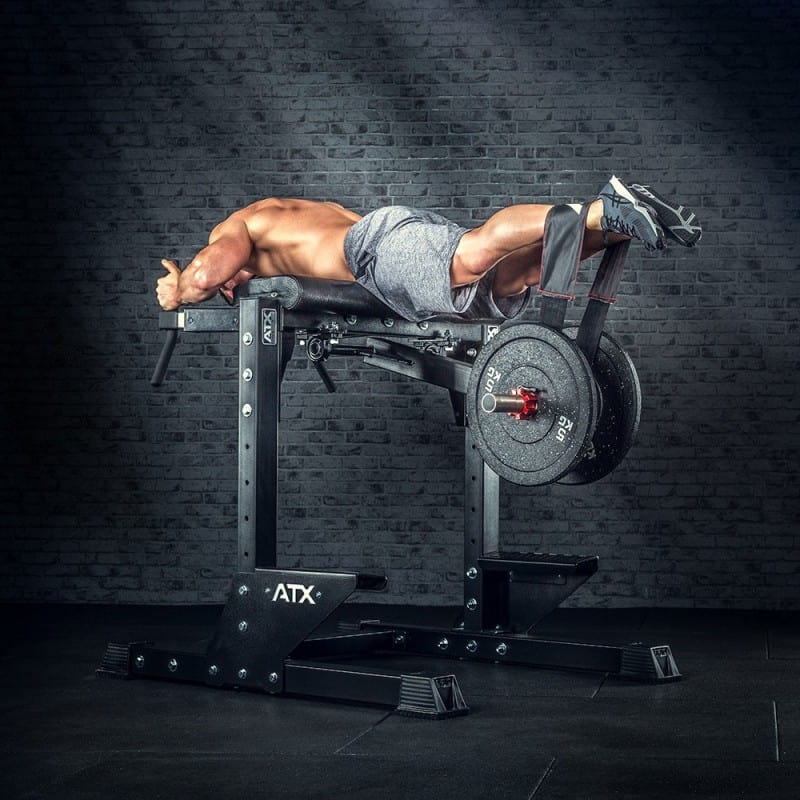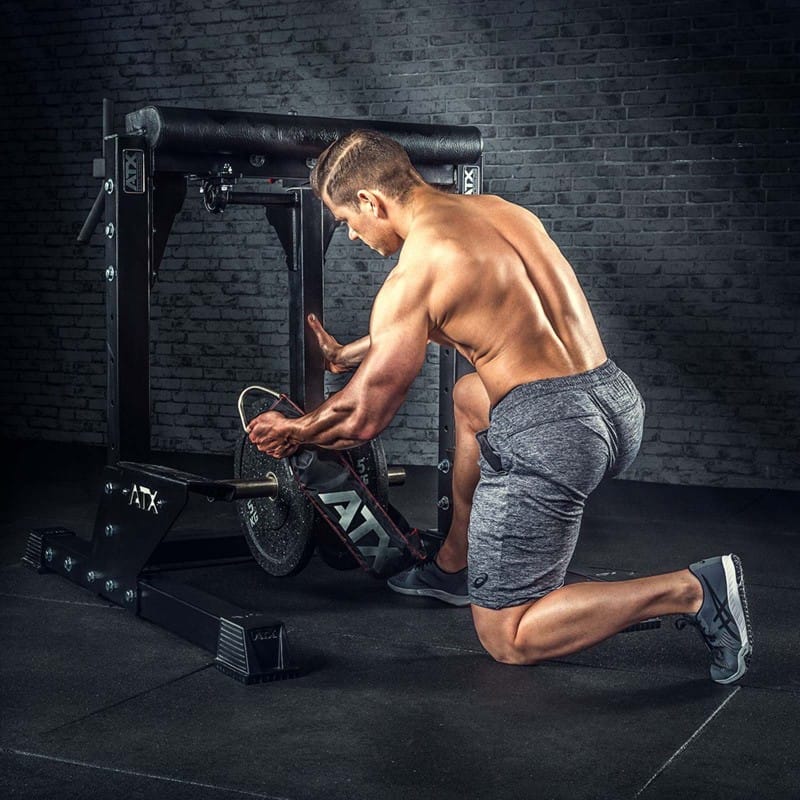Lumbar pain is an issue several workers face, especially staff members that may have to sit for long periods. But back pain issues are not restricted to desk workers alone. Weightlifters, bodybuilders, fitness enthusiasts, and so on all encounter these health problems.
In most cases, the only way to heal lower back pain is adequate rest and exercise.
When it comes to exercise, the reverse hyper (RH) machine offers enhanced support against this kind of pain.
And that’s not all!
There are tons of gains attached to these accessories aside from back relief support. With so many fitness experts trusting this device as the go-to dorsum relief aid, you need to check it out.
That’s why this piece covers everything essential about reverse hyper exercises. The impressive cache of facts makes it comfier to max out benefits from this revolutionary exercise routine.
Table of Contents
Reverse Hyper – What is it?
The RH machine is a device designed to support the development of the whole backside targeting glutes, hams, and other muscles. It also functions as a device built to offer spine decompression with minimal vertical compression.
The Reverse Hyper Machine and Variations
Louie Simmons developed the new reverse hyper routine during his recovery from his dorsum issues. Since the routine gained popularity in the 70s, it’s become a mainstay in several fitness regimes and it is also used in Crossfit games.
Several uses of this routine make it a top choice for versatile fitness development and bodyweight training.
There’s a consensus that these machines deliver significant results in a short while. But in most cases, these machines tend to be expensive.

Some garage gym owners can’t afford a rogue reverse hyper machine in one fell swoop. But it doesn’t mean your garage gym cannot run these exercises and variations.
Right here, we’ll be taking a closer look at several reverse hyper alternatives capable of boosting strength.
These options are easy to set up and could fit in your garage gym without hassle. It’s not by any means an indication that rogue fitness machines like the rogue reverse hyper won’t function.
Consider it as an avenue to max out the reverse hyper exercise on a budget.
How-To
- Get into a prone position on the reverse hyper machine
- Hold your legs straight
- Contact core muscles to limit lower back extension
- Lift legs with the aid of glutes and hamstrings muscles
- Maintain minimal jerking of the upper torso area
- Move legs in a flexible, controlled manner to propel momentum during rep movements
- Return load towards the starting point
Muscles Worked
Spinal erectors
Lower back erectors work in an isometric fashion geared towards lifter stability. Extra mobility on the lumbar improves extension and flexion per rep. This exercise helps stabilize the pelvic region and increase glute loading potential.
Glute
The gluteal muscles are active in reverse hyperextension workouts. These exercises work and aid hip extension under pressure. It also adds glute activation and overall strength.
Hamstrings
It also activates hamstrings during reps. Since reverse hyperextension exercises elicit knee extension under load, hamstrings’ isometric strength gets a boost.
Benefits of Reverse Hyperextensions
Posterior chain development and increased flexibility
Reverse hypers target glutes hamstrings development. The exercise routine focuses on hypertrophy and strength with an emphasis on volume and girth.

Getting more flexibility becomes more comfortable with regular reverse hyperextension exercises. Several lifters get more power to produce a broader motion range for improved efficiency in general. With an emphasis on flexibility increases, it helps to increase speed over time.
The routine achieves speed potential through building backside muscles.
Accommodating resistance support
These exercises promote accommodating resistance with band-reliant exercises. Load movement and muscle endurance yields more results with prior routines.
Glute drive
Glutes and hamstrings get the required drive through reverse hyper exercises. With glute and hamstring drive fueled by the movements, the potential for increased legs strength is significant.
Increased horizontal loading
It offer better horizontal loading than several other routines. Such a significant loading potential could mean more gains for athletes than deadlifts or other bodybuilding reps.
Lesser demanding routine with significant results
Aside from being ideal for hamstrings and lower back muscles development, reverse hyper routines increase rep ease.
Injury resilience
Several injuries, notably lower back issues, become more comfortable to scale through with this exercise. In most cases, powerlifters and fitness athletes rely on this routine in recovery-focused training.
The routine’s developer (Louie Simmons) brought forth reverse hyper rep fitness due to his back issues. So, you’re sure this routine offers significant injury relief over time.
Hamstring isolation
The exercise functions in isolating the hamstring directly, blocking other stunting factors. With this function, the hamstrings don’t get overloaded, giving them more development opportunities.
Imbalance reduction

These routines make use of its aggressive movement to develop lagging muscle groups. These muscle groups usually form around the gluteal and hamstring areas. With a constant reverse hyperextension routine, there’s a greater emphasis on overall body stability.
Spine decompression
Decompressing the spine is another significant benefit of these exercises. With this routine’s focus on limiting spinal loading, the routine decompresses the vertebrae, promoting increased sturdiness.
Reverse Hyper (RH) Alternatives
Back-loaded barbell
Widely regarded as the good morning in fitness circles, back-loaded barbells focus on similar muscles like RH reps.
The significant variation between both exercises is the barbell’s major emphasis on lumbago muscle development. Also, back-loaded barbells develop spinal erector muscles for greater balance.
And aside from these gains, the routine helps ease recovery from lower back injuries.
Lying hip thrusts
Horizontal hip thrusts offer similar gains for lifters without access to a RH machine. The routine focuses on glute drive and strength building. A significant difference is this routine’s perennial focus on glute development alone.
Banded RH
Resistance bands can function in similar ways to an RH machine. These bands help load movement and increase accommodating resistance that fuels the development.
Glute ham raise
The gluteus hamstring developer, or glute-ham raise, is a routine designed to influence similar muscles like reverse hyper reps.
It raises focus on enhancing muscle hypertrophy, strength, and endurance. Also, glute-ham raise reps are similar to hyper reps in form. The notable difference is GHD’s emphasis on spinal erectors and lower back.
Isometric hold RH
Regular isometric pauses help promote endurance at several stages of the routine. Lifters get increased torso positioning. With better torso positioning comes improved support for thrusting, running, front/back squat reps, and so on.
Tempo RH
Increased endurance under tension, mobility awareness, and muscle activation are easier with tempo reverse hyper reps. The only difference with standard RH reps is that loading in tempos may be inferior.
GHD RH
Extra gluteus and ham development is the focus of a GHD device. GHD works as an alternative for improving muscle activation and endurance.
All these functions help lower body strength. But GHD RH routines don’t offer isolation support.
Hamstring Curls (Nordic stance)
Nordic ham curls can work on the floor or a pull-down station. These curls focus on the hamstring and max out isometric strength for increased ham loading. The only limitation of this variation is its limited support for enhanced muscle hypertrophy.
Hollow Rocks (reverse format)
Similar to regressed extensions, reverse hollow rocks focus on working muscles, emphasizing spinal extension, and gluteal activation.
Horizontal hamstring curls
Rated as one of the easiest home RH routines, the horizontal ham curls work like a GHD routine.
The routine works with a towel and targets the ham and hip raise areas. In most cases, fitness-training newbies start with this technique before progressing to tougher routines.
Regressed back extensions
Commonly referred to as Supermans, regressed extensions work on similar muscles.
Focusing on targeting glutes, fitness enthusiasts target the routine with their knees at a 90° angle. Also, with the toes downwards in this stance, the ankles get placed in a plantar-flexion position. The routine targets gluteus and erectors but have limited isolation potential.
Table RH
Besides being possible on a table, reverse hyper exercises can work on a bench or sturdy platform. Working with tables gives you the freedom to amass a better range of motion.
But making the most of the table RH rests on how durable it is. Unsteady platforms could lead to injury, so exercise caution when improvising with this technique.
Reverse Hyper – Recommended Sets for Different Results
Muscle growth
Professional powerlifters suggest athletes perform reps from a dozen to two dozen each set. Performing twenty reps per set also help in restoration exercises for athletes recovering from lower back injuries.
Strength training and overall hypertrophy
When it comes to strength training, pro bodybuilders and athletes recommend no more than twelve reps. With regular reps per set through this technique, significant results become noticeable in a short while.

Loading and endurance
During loading and endurance building sessions, pros recommend keeping reverse hypers halfway off the highest back squat position. Emphasis should also rest on using a decent weight rating for better results and increased chances of recovery.
FAQs
How do you reverse Hypers without a machine?
- Horizontal hamstring curls
- Regressed back extensions
- Through Nordic hamstring curls
- With a table
- With glute-ham developer (GHD)
Who invented the reverse hyper?
This routine has been invented by Louie Simmons, founder of Westside Barbell and professional powerlifter.
What is reverse Hyperextensions good for?
This routine targets hip extension muscles, several gluteus and hamstring areas, and spinal erectors and improve general development. It also increases upper back development and decompresses the spine.
What is a reverse hyper exercise?
Reverse hyper exercise is a movement designed to increase general muscle hypertrophy, loading, growth, and endurance.
Final Rep
The reverse hyper movement comes with a lot of perks targeted at better muscle development and endurance. With the information in this piece, it becomes easier to get increased strength in your gym.
And even if you can’t afford the piece of equipment needed for standard reps, there’s no hassle. Alternative methods above will help you max out your garage gym workout sessions and remain in top shape.

I started my sporting career at the age of 3 in the preparation of ice hockey. I spent sixteen years playing ice hockey, and I remember the summer preparations today. What are my passions? It is still fitness training, all kinds of workouts and the most important is a healthy lifestyle. You can’t just do a workout without the right way of life. You need to stay curious and listen to your body.

